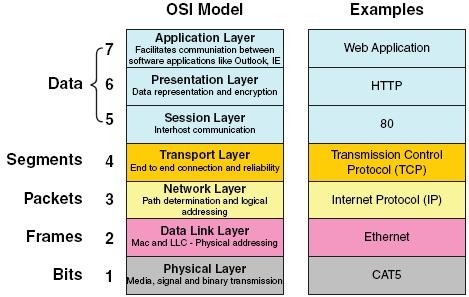The network layer is the third level of the Open Systems Interconnection Model (OSI Model) and the layer that provides data routing paths for network communication.
Data is transferred in the form of packets via logical network paths in an ordered format controlled by the network layer.
Logical connection setup, data forwarding, routing and delivery error reporting are the network layer’s primary responsibilities.
The network layer is considered the backbone of the OSI Model. It selects and manages the best logical path for data transfer between nodes. This layer contains hardware devices such as routers, bridges, firewalls and switches, but it actually creates a logical image of the most efficient communication route and implements it with a physical medium.
Network layer protocols exist in every host or router. The router examines the header fields of all the IP packets that pass through it.
Internet Protocol and Netware IPX/SPX are the most common protocols associated with the network layer.
In the OSI model, the network layer responds to requests from the layer above it (transport layer) and issues requests to the layer below it (data link layer).
Network protocols provide what are called "link services". These protocols handle addressing and routing information, error checking, and retransmission requests. Network protocols also define rules for communicating in a particular networking environment such as Ethernet or Token Ring.
IP-This is short for Internet Protocol which works at the OSI network layer and is a routed protocol for forwarding layer 3 packets.
IPX-NetWare's protocol for packet forwarding and routing.
All networking including Ethernet and TCP/IP have been developed on an OSI model that refers to Open Systems Interconnection. Essentially, OSI has seven layers – Physical, Data Link, Network, Transport, Session, Presentation, and Application.
Each of these layers speaks only to a layer above or below it. Each of these layers executes a specific function. TCP/IP, Ethernet and other protocols work at various levels of OSI layers depending upon the need.
The Physical Layer is at the lowest level or first layer. This has all the physical aspects of networking such as cabling, connectors, modems, repeaters, routers, etc.
The Data Link Layer identifies computer on the network, organizes the physical layers into logical groups, detects and corrects errors, and controls the data flow.
The Network Layer’s main objective is to move data. In converts logical address to physical address, and takes the shortest path to the receiver.
The Transport Layer ensures the data reaches without errors. It works on the error correction algorithm built by the Data Link Layer. It also creates the data packets we spoke about above.
The Session Layer establishes and maintains connection between two nodes or hosts on a network. It re-establishes connection if gets broken for some reason. The Session Layer, because it determines who can talk to whom, is also called a ‘traffic cop’ of Networks.
The Presentation Layer acts as a translator between the application and the network. It converts data into a format that the network can understand, looks after data encryption, and manages passwords.
The final layer is the Application Layer. This does NOT refer to applications such as Word of Excel. Rather it refers to applications that provide services such as file transfer, file management, and email management.




















































































































